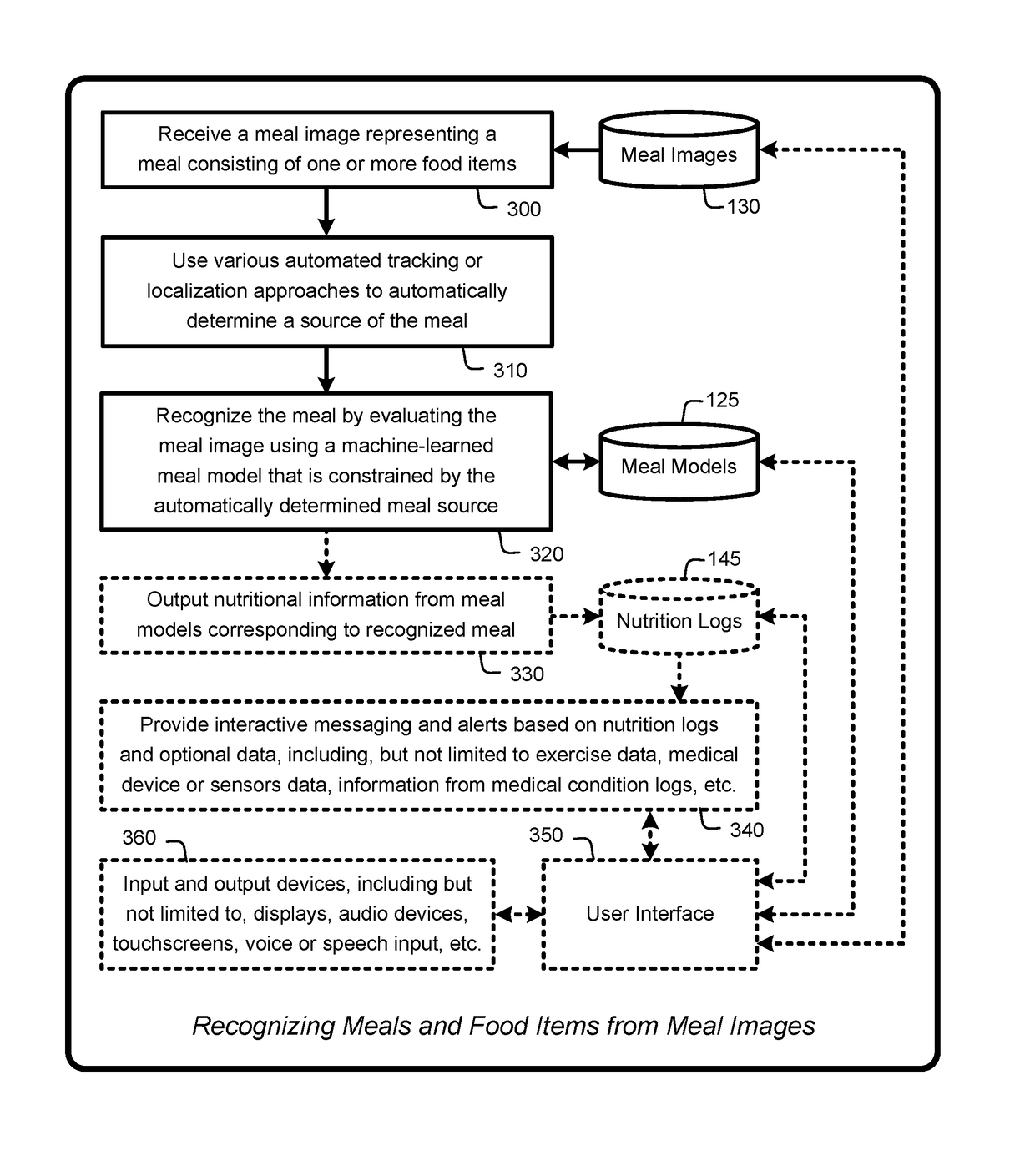Food logging from images
a food logger and image technology, applied in the field of food logging from images, can solve problems such as general scale problems, food loggers may not be able to determine the current user location using automated tracking or localization techniques, and the fig. 1 is not intended to provide an exhaustive or complete illustration of every possible embodiment, so as to simplify the recognition process
- Summary
- Abstract
- Description
- Claims
- Application Information
AI Technical Summary
Benefits of technology
Problems solved by technology
Method used
Image
Examples
Embodiment Construction
[0024]In the following description of the embodiments of the claimed subject matter, reference is made to the accompanying drawings, which form a part hereof, and in which is shown by way of illustration specific embodiments in which the claimed subject matter may be practiced. It should be understood that other embodiments may be utilized and structural changes may be made without departing from the scope of the presently claimed subject matter.
1.0 INTRODUCTION
[0025]In general, a “Food Logger,” as described herein, provides various approaches for using trained meal models to recognize food from meal images and to estimate nutritional information of the recognized food for use in a wide range of applications. Note that in various embodiments, meal images used to construct the meal models are included in, or associated with, one or more of the meal models to allow users to browse meal images and associated nutritional information via a user interface component of the Food Logger. Whi...
PUM
 Login to View More
Login to View More Abstract
Description
Claims
Application Information
 Login to View More
Login to View More - R&D
- Intellectual Property
- Life Sciences
- Materials
- Tech Scout
- Unparalleled Data Quality
- Higher Quality Content
- 60% Fewer Hallucinations
Browse by: Latest US Patents, China's latest patents, Technical Efficacy Thesaurus, Application Domain, Technology Topic, Popular Technical Reports.
© 2025 PatSnap. All rights reserved.Legal|Privacy policy|Modern Slavery Act Transparency Statement|Sitemap|About US| Contact US: help@patsnap.com



